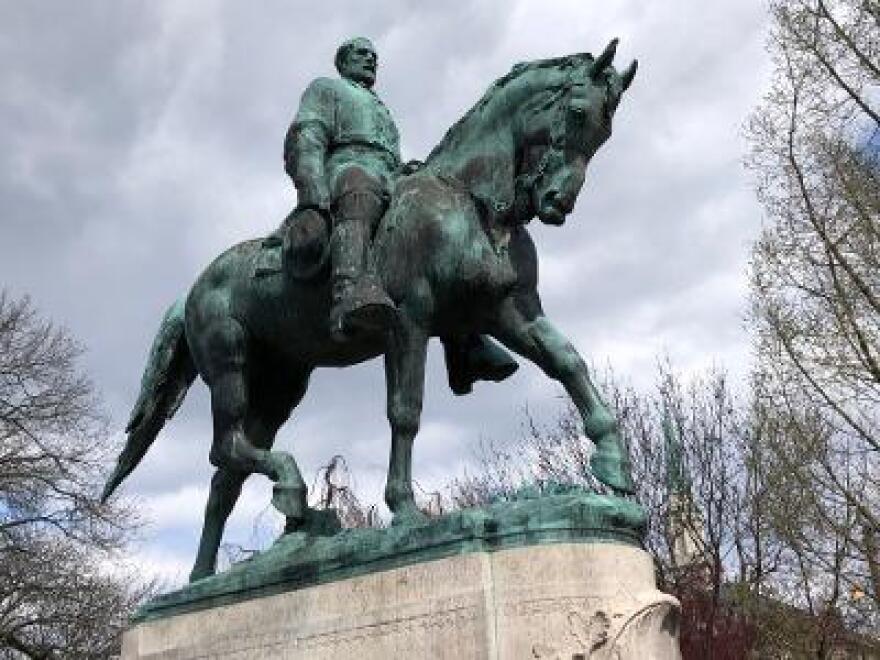As cities all over the South remove confederate monuments, most are also debating what to do with statues that weigh 8,000 pounds or more. In Charlottesville, members of city council have suggested melting them down and providing bronze to local artists who could make new sculptures from it. We asked reporter Sandy Hausman to find out how that might work.
James O’Neil got an engineering degree from Georgia Tech but came back to this place -- the Okay Foundry, opened by his great grandfather and a crew of metal workers in 1912.
“I grew up around it. I have fond memories of being here as a child with my father," he explains. "He would put me out here working with them, and they would kind of take care of me and show me how to do stuff.”
Today the foundry makes fence, columns and posts for historic restorations and helps artists like Jesse Burrowes create sculptures.
“Seeing a mold and the impression of an object in a mold and then trying to anticipate how the metal is going to capture that – I think it’s magical!“ he says.

He discovered the place as a student at VCU. O’Neil welcomes about a dozen young artists each semester to learn how people have made durable metal sculptures for centuries.
“Most sculptures are made in smaller pieces, and then they are welded together, and then the seams are chased so that you cannot see the seams.”
It’s a process lost to many parts of the country.
“Like all metal casting though, a lot of that has moved overseas," O'Neil says. "It’s not just industrial parts but even fine arts are made in China, because they have a large number of artisans who can do this mold-making, the welding, the chasing, the labor intensive aspects of it. They now have as large trained workforce to do it.”
But O’Neill was determined to keep the jobs and the craft here, setting up an affordable program for artists.
“We started with this idea of rent-a-foundry, because on the weekends nobody was using the foundry. All of the equipment was here, and so we started to find artists who could work in the foundry, and they just needed a place to work in.”

And now O'Neil, who has helped with maintenance and restoration of confederate cemeteries, could be asked to melt down confederate monuments and provide raw materials to modern-day sculptors.
“Oh yeah. It’s absolutely do-able," he concludes. "You would just have to cut up the sculpture into smaller pieces so it fits in the furnace , and then melt it and pour it into something new. They can melt 600 pounds of bronze apiece. It takes a couple of hours to melt it. It’s molten. It flows like water.”
And at $5.50 a pound, bronze is valuable stuff – used to craft sculptures that sell for $100,000 or more.
He knows some Virginians will be sorry to see the statues go, but O’Neil says they’re not great art. You find them all over the South in communities determined to glorify those who lost the Civil War.
“Certainly the craftsmanship of these monuments is exquisite," he concedes, "but these are basically realistic renderings of horses with figures in military dress posed in a very similar fashion. There’s not a lot of artistic expression I don’t think, but there are many of them all done in the same style that was done successfully and then rinsed and repeated many times.”
O'Neil hopes those who are dismayed by the disappearance of confederate monuments will be consoled by the creation of new jobs and opportunities in places like Richmond where foundries survive.


